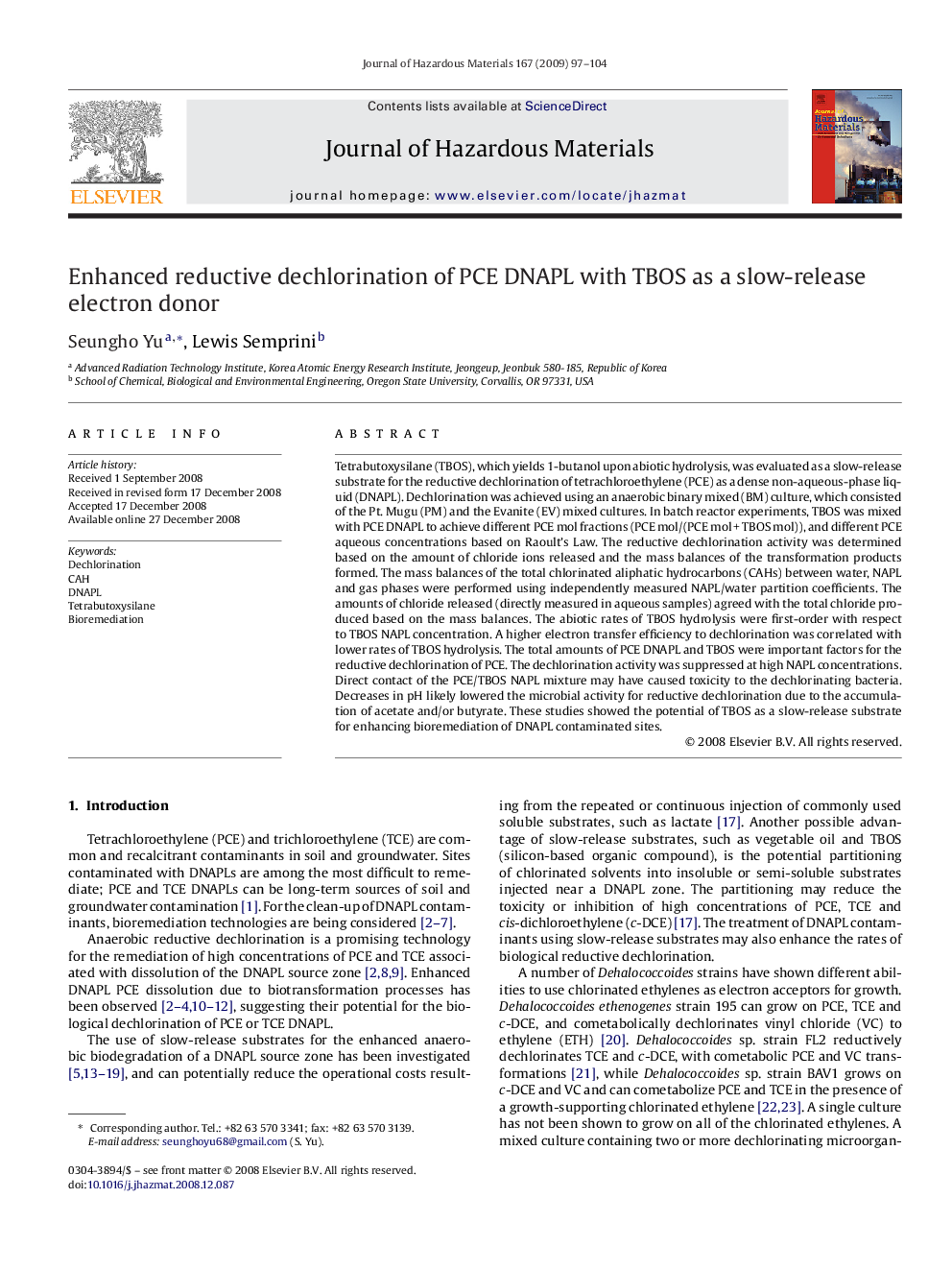| Article ID | Journal | Published Year | Pages | File Type |
|---|---|---|---|---|
| 581752 | Journal of Hazardous Materials | 2009 | 8 Pages |
Abstract
Tetrabutoxysilane (TBOS), which yields 1-butanol upon abiotic hydrolysis, was evaluated as a slow-release substrate for the reductive dechlorination of tetrachloroethylene (PCE) as a dense non-aqueous-phase liquid (DNAPL). Dechlorination was achieved using an anaerobic binary mixed (BM) culture, which consisted of the Pt. Mugu (PM) and the Evanite (EV) mixed cultures. In batch reactor experiments, TBOS was mixed with PCE DNAPL to achieve different PCE mol fractions (PCE mol/(PCE mol + TBOS mol)), and different PCE aqueous concentrations based on Raoult's Law. The reductive dechlorination activity was determined based on the amount of chloride ions released and the mass balances of the transformation products formed. The mass balances of the total chlorinated aliphatic hydrocarbons (CAHs) between water, NAPL and gas phases were performed using independently measured NAPL/water partition coefficients. The amounts of chloride released (directly measured in aqueous samples) agreed with the total chloride produced based on the mass balances. The abiotic rates of TBOS hydrolysis were first-order with respect to TBOS NAPL concentration. A higher electron transfer efficiency to dechlorination was correlated with lower rates of TBOS hydrolysis. The total amounts of PCE DNAPL and TBOS were important factors for the reductive dechlorination of PCE. The dechlorination activity was suppressed at high NAPL concentrations. Direct contact of the PCE/TBOS NAPL mixture may have caused toxicity to the dechlorinating bacteria. Decreases in pH likely lowered the microbial activity for reductive dechlorination due to the accumulation of acetate and/or butyrate. These studies showed the potential of TBOS as a slow-release substrate for enhancing bioremediation of DNAPL contaminated sites.
Keywords
Related Topics
Physical Sciences and Engineering
Chemical Engineering
Chemical Health and Safety
Authors
Seungho Yu, Lewis Semprini,
